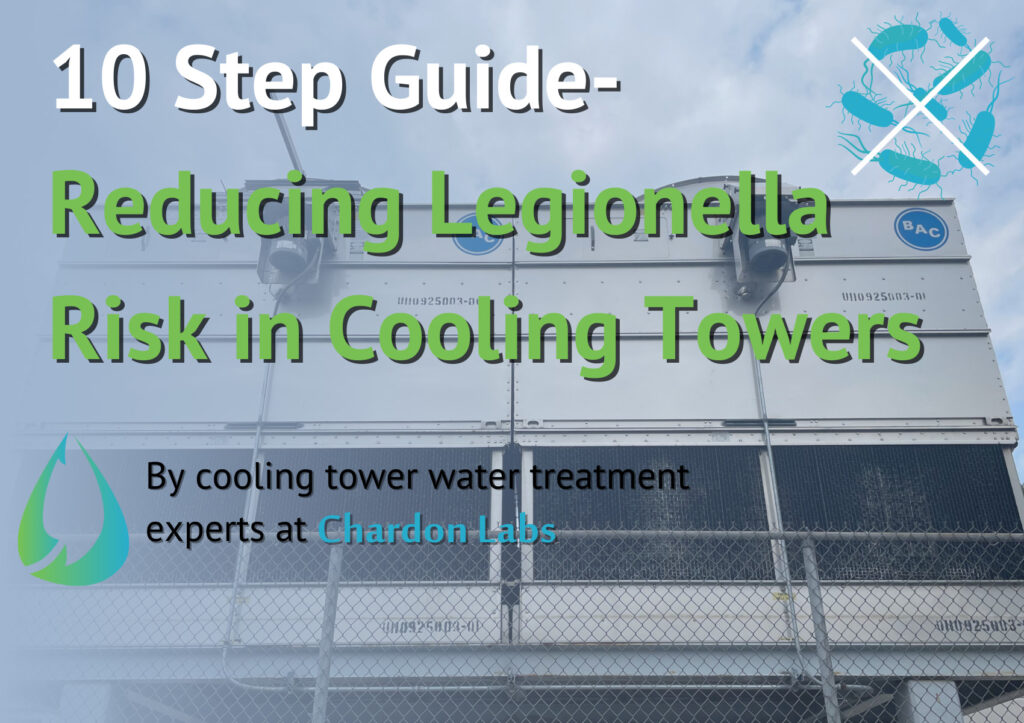
November 21, 2023
Cooling Tower Susceptibility to Legionella
Cooling towers create the right conditions for Legionella to grow. Legionella bacteria prefer warmer water and stagnant water. When cooling towers transfer heat, that water is warmed up at temperatures that Legionella can thrive in. This is especially common when water in the tower stays stagnant for a long time. Once a cooling tower has Legionella breeding in it, it can easily infect nearby people. Cooling towers create a mist, the water droplets in this mist could be infected with Legionella and infect people when they breathe it in. Cooling towers situated near dense population areas, workers, residents, or people at risk such as the elderly or immunocompromised should be tested and treated regularly for Legionella. Legionella causes Legionnaires’ Disease, which is a type of pneumonia that can be dangerous to those who contract it.
10 Steps for Legionella Preventative Maintenance & Risk Reduction
1. Flushing & Cleaning
Flush and disinfect your cooling tower before a system startup after the system has been laid up for a long time. You will need to flush any dead legs and low-flow areas of piping connected to the tower. Disinfecting the rest of the system is a best practice as well. The reason for all of this is that the long time that is often between cooling tower seasons allows Legionella to grow in any stagnant water in the system. Over time, the chance of that becomes more and more likely. You can’t leave microbiological life to be left unattended on your cooling tower for months at a time and expect to be able to run a clean system on startup. Also, regular flushing and cleaning, even during operating times, can further reduce the chances that a strain of Legionella bacteria is developing in your system.
2. Testing
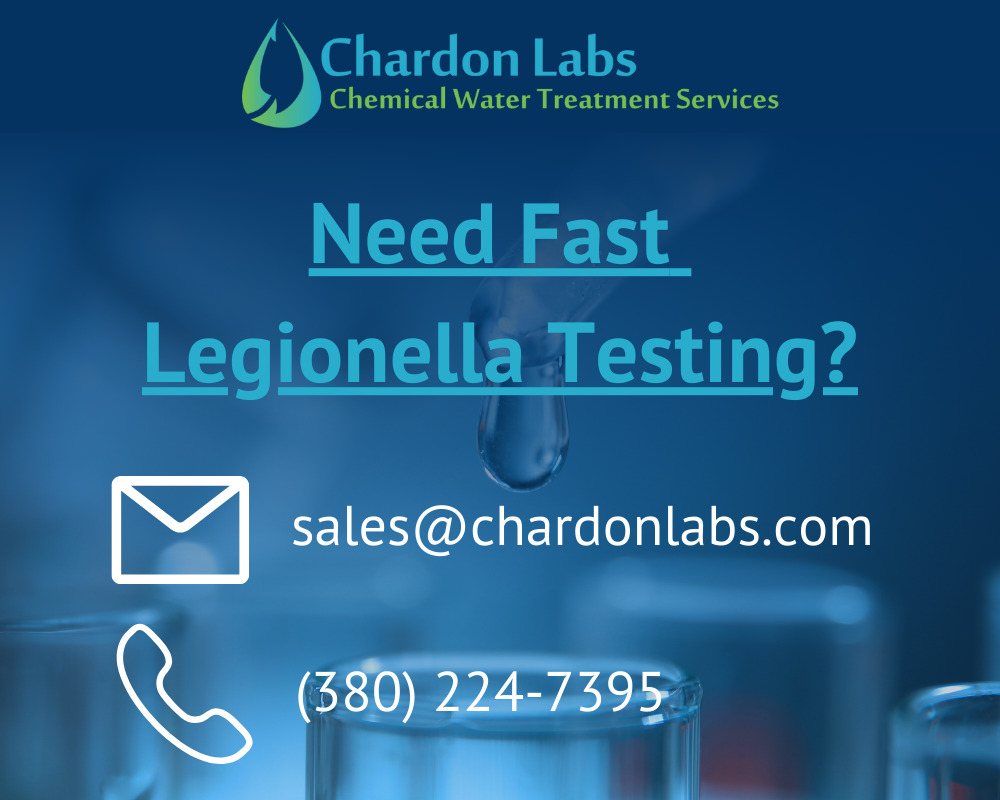
Test your system often. Keep these records consistent, and if Legionella is found, attempt to identify the source and keep note of that. Keep in mind as a disclaimer, all of the best practices mentioned here can decrease the likelihood of Legionella, but it is a common bacteria in nature that may still make its way into your system. It is better to be safe and test regularly. This testing can help detect Legionella early before it has time to grow and before it infects anyone.
For Legionella testing, contact the professionals at Chardon here.
3. Dosing Biocides
Utilize biocides regularly to kill potential Legionella that is growing. A combination of oxidizing and non-oxidizing biocides helps kill microorganisms in different ways, increasing the chances of success.
4. Setting Temperature
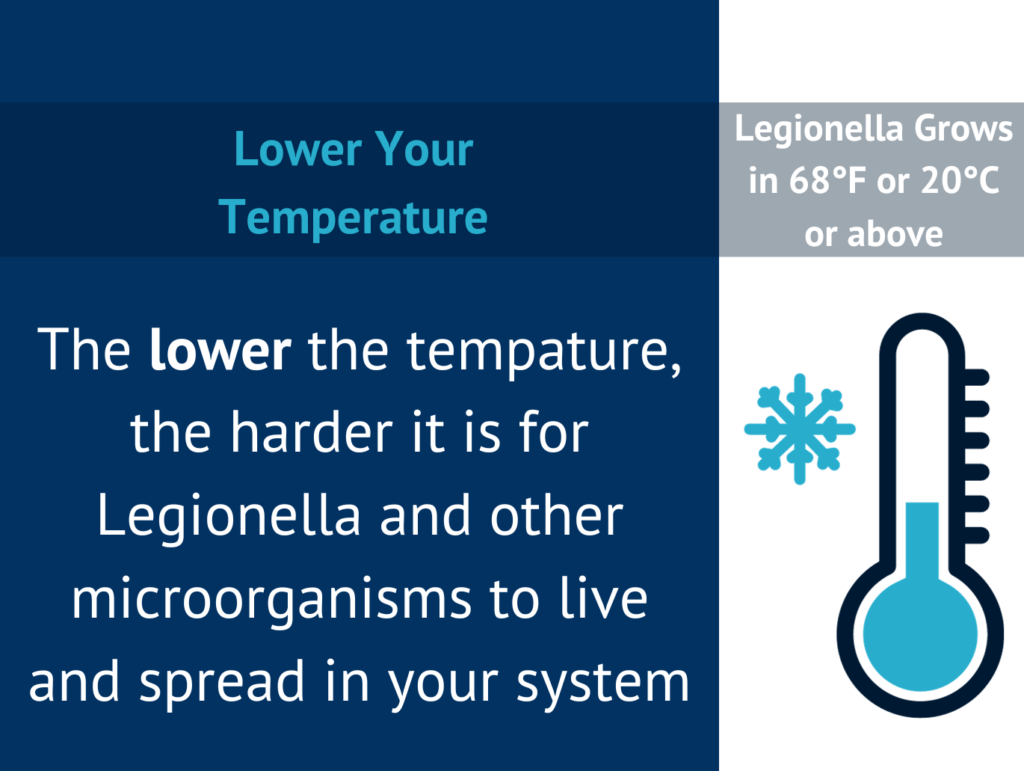
Keep your water temperature as low as you can. 68°F / 20°C or above can be ideal temperatures for Legionella to grow in. Additionally, be aware of areas with warm and hot water. It is more likely that growth is occurring within the ranges of 68°F-113°F 20°C-45 °C.
5. Scheduling Blowdowns
Utilize scheduled blowdowns to keep your water clean. Although higher cycles of concentration have lower water bills, there are risks you have to factor in. If the water is dirty and is not being dispensed out of the system, then it could have picked up bacteria, organic matter, sediments, etc.
6. Perform Maintenance
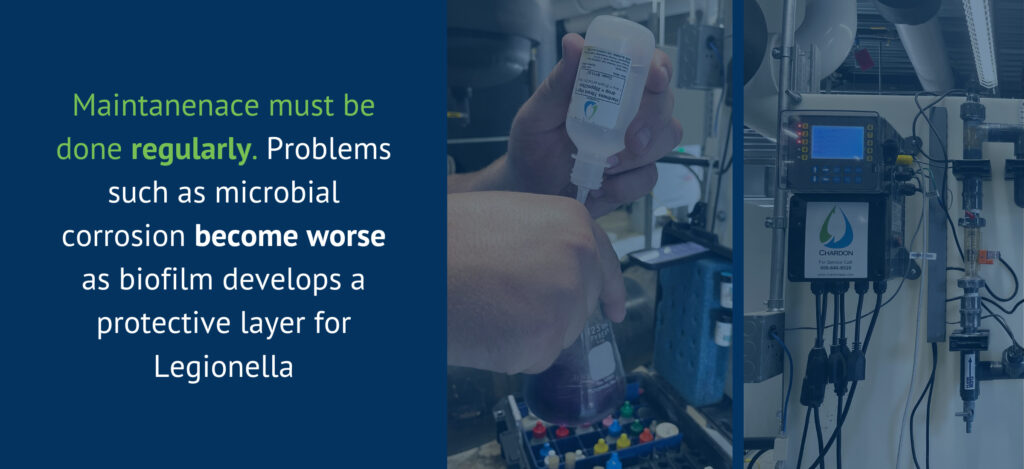
Preventing corrosion and scale, plus keeping the tower clean will help prevent Legionella as well. Corrosion is often caused by microorganisms, scale creates a breeding ground for legionella, and unclean systems may create a biofilm that can protect Legionella and make it more difficult to kill. Chemicals should be regularly injected into the system. The use of automated controllers is recommended.
At Chardon, we specialize in chemical water treatment and can customize a plan best suited for your system. To get expert advice, consulting, or service, contact Chardon here.
7. Assess Risks
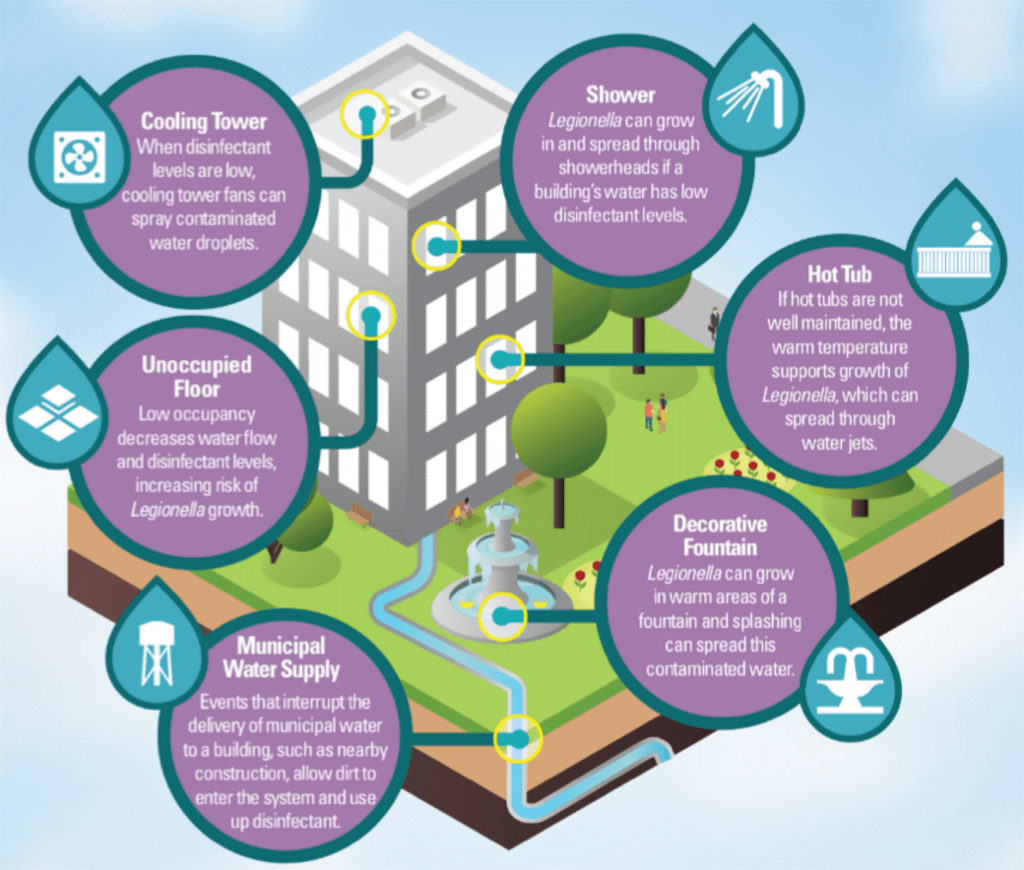
Although this article focuses on your cooling tower, it is important to assess all water risks for your building(s). While cooling towers are non-potable, many of the other systems utilizing water that may be potable could still contract Legionella. Be aware that a cooling tower is not the only source for Legionella breakouts. Showers, sinks, pipes, pools, etc. can spread this disease. Often the cause is stagnant water from infrequent use, dirty systems that have not been cleaned, or connecting water lines. Creating a water management plan is one of the best ways to combat this. Water management plans involve regular use of water to prevent stagnation and often involve frequent testing.
8. Install Filters
Utilize filters to remove unwanted material floating in the system. There will be less organic material and fewer nutrients floating in the system that can increase Legionella growth. In addition, these filters often come with a circulation pump which can help keep the water moving in the system and prevent stagnant water conditions ideal for Legionella.
9. Keep your System Running
Keep your cooling tower system(s) in operation. Especially when you have multiple systems, it is important to not have a system with a lot of downtime, unless proper disinfection and flushing procedures are done. The less stagnation, the less chance of Legionella growth.
10. Prepare an Outbreak Response
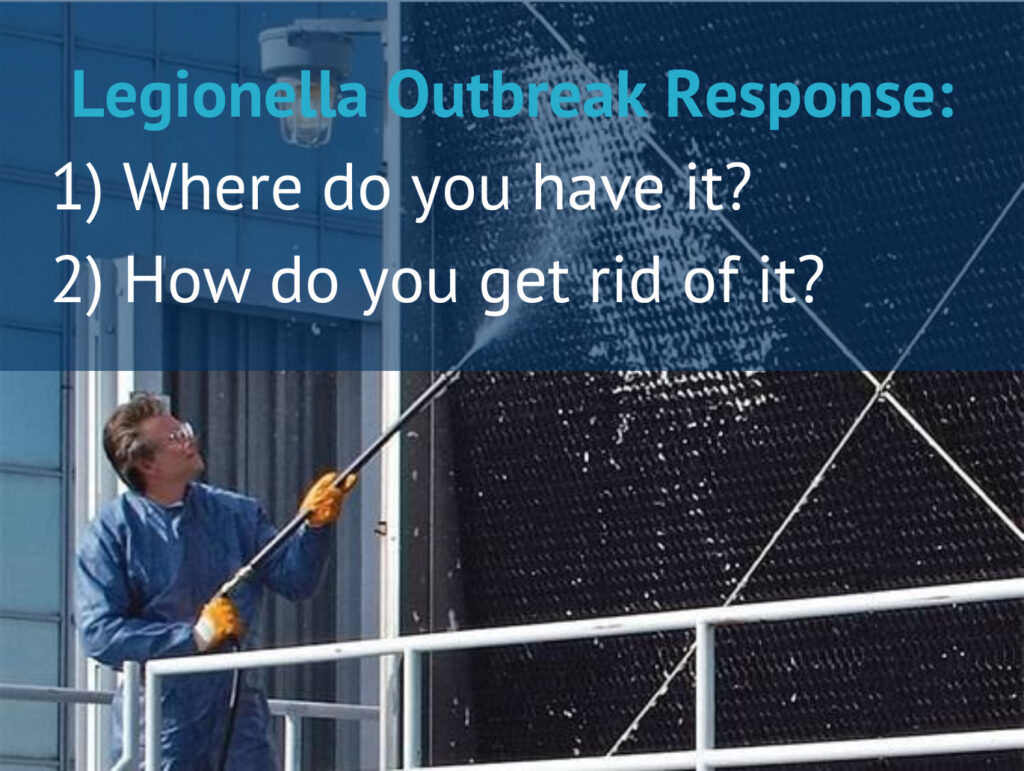
Be ready in case an outbreak of Legionella occurs. Staying proactive by preparing for potential outbreaks can help reduce the time and improve the efficiency of your response to handling the situation. It is less costly and much safer to respond quickly. There are three important factors to consider in your response to Legionella outbreaks. The first is where do you have it? Test different areas, both in and outside of your cooling tower and the surrounding water systems. The second is how do you get rid of it? You will want to shut the system off, drain the water, and completely clean the system. Add biocide disinfectants that can effectively kill the Legionella. Test regularly to make sure the problem is completely gone. The third is what problem could have caused it? A cause of a Legionella outbreak can be identified by looking for problems with your tower’s chemical water treatment, your water management plan, pipe dead legs, or even a nearby fountain that has not been cleaned in a long time. It is important to perform all of the best practices and identify possible culprits to prevent the outbreak from happening again.
To have your cooling tower, pipes, sinks, or other potable/non-potable water systems tested or cleaned contact the specialists at Chardon here.

Matt Welsh
Matt Welsh is the Vice President and Water Consultant at Chardon Labs. He helps consult a wide range of customers utilizing various methods of water treatment, from chemical to chemical-free approaches, large and small applications, and across a wide range of geographical influences. With 20 years of water treatment experience, including a wide range of troubleshooting and service in potable water and non-potable HVAC and industrial applications, he is an expert in water treatment chemistry for cooling towers, boilers, and closed-loop systems.
